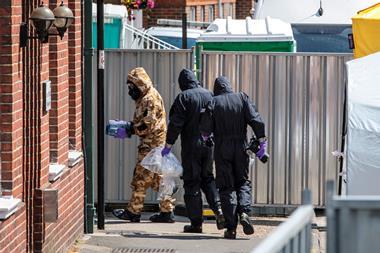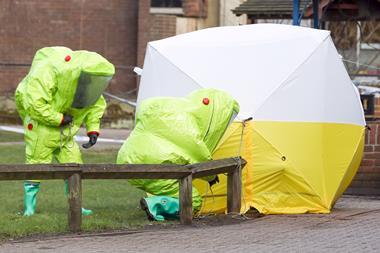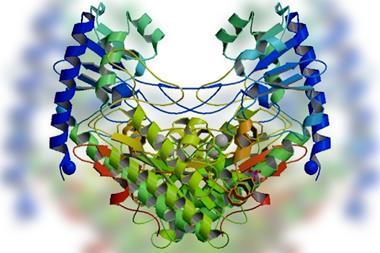Researchers in the Netherlands have shown how plant biomarkers can be used to track the use of nerve agents.
Chemical weapons remain a problem despite their prohibition under the Chemical Weapons Convention, with incidents confirmed in Syria, Russia and the UK in recent years. Because these agents are often volatile and reactive, they don’t persist in the environment. Clues in the biology of victims can provide essential evidence but obtaining such samples is difficult.
Mirjam de Bruin-Hoegée and co-workers at TNO Defence therefore decided to look back to the environment, specifically plants. Samples from plants, unlike humans, are easy to collect, transport and store without the additional complications of being medical samples. Their research shows the nerve agents sulfur mustard, sarin, chlorine and Novichok nerve agent A-234 break down in plants to form specific and detectable protein adducts, meaning part of the nerve agent is added to a protein within the plant. ‘In this specific case they react with the amino acid tyrosine. Then it is relatively stable, and you can extract the proteins from the plants,’ explains De Bruin-Hoegée. The group use digestion methods on the adducts formed from the nerve agents and tyrosine-containing proteins. These broken-down adducts are detectable at very low concentrations up to three months after exposure using mass spectrometry.

The method worked across all plants tested – basil, bay laurel leaf and stinging nettle. As the adduct forms via a general mechanism, forensic scientists could use the approach with a far wider range of plant species. ‘The TNO group has unequivocally demonstrated these concepts with previously unreported and potentially long-lived plant exposure biomarkers,’ says Jonathan Forman, a science and technology advisor in the global security technology and policy group at the Pacific Northwest National Laboratory in the US.
Katelyn Mason, a biochemist at the Lawrence Livermore National Laboratory in the US, says ‘the impact of this research cannot be understated, especially in the case of chlorine-based plant biomarkers because verification of the use of chlorine has remained elusive to forensic efforts for decades.’
The tricky problem of chlorine gas detection isn’t completely solved though. Chlorine releasing products such as household bleach can mimic the same effect, resulting in a false positive. However, De Bruin-Hoegée adds that while the group found some of the same biomarkers formed between the two, they expect bleach and chlorine gas to also have unique biomarkers. This is the next obstacle the group aims to tackle which, if successful, will allow them to definitively distinguish between bleach cleaners and chlorine gas attacks.
References
M de Bruin-Hoegée et al, Anal. Methods, 2023, 15, 142 (DOI: 10.1039/d2ay01650h)












No comments yet